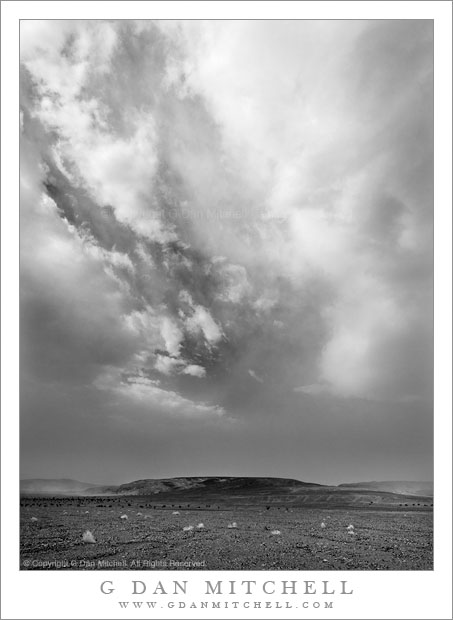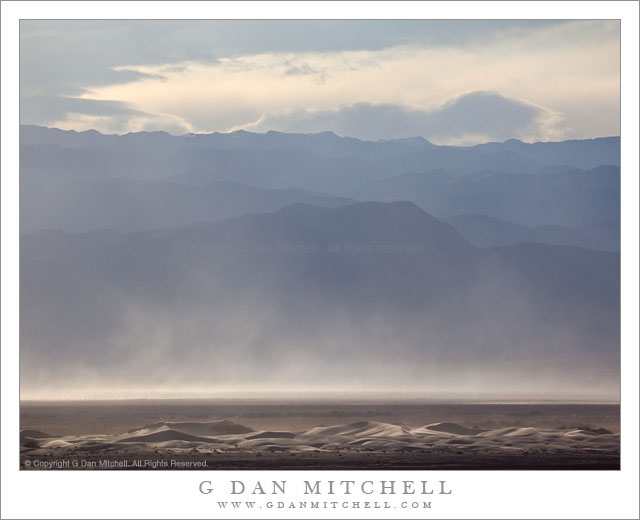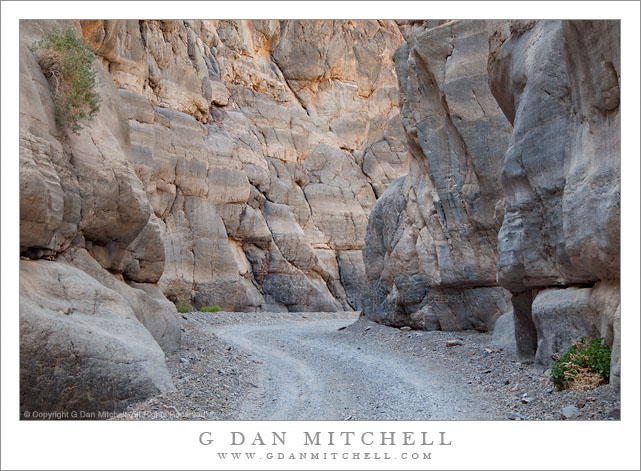Dust Storm, Death Valley. Death Valley National Park, California. April 3, 2009 © Copyright 2009 G Dan Mitchell – all rights reserved.
A building dust storm begins to obscure the sky above Death Valley, California.
In retrospect, there were hints that this tremendous dust storm was coming prior to its actual arrival. Very early in the morning I had been photographing at another location and the light and atmosphere were a bit unusual. The dawn and very early morning light was beautifully warm, but the distant peaks were slightly obscured by a sort of atmospheric haze that is hard to describe but which I now recognize as being associated with incoming dust storms. Soon, large and impressive clouds began to appear high in the deep blue sky, but at about the same time the air closer to the bottom of Death Valley started to look increasingly opaque.
I left my early morning shooting location and began my trip home from Death Valley. After a stop at Furnace Creek – to treat myself to a real breakfast after days of camping – I headed north towards Stovepipe Wells. As I headed north I began to see the obvious clouds of blowing dust accumulating along the Grapevine Mountains, and shortly before the turn to Stovepipe I encountered the boundary between the relatively clear air and the murk of the dust storm that was growing directly ahead and off to my left.
Before entering the cloud – I had not choice since my route went that direction – I pulled over within perhaps a quarter-mile of the edge of the storm. Not wanting to risk dust getting into my camera, I unpacked my gear inside the car and decided to just use the lens that was already fitted to the camera. I stepped outside to find that lines of wind-blown dust were already streaming along the ground and that the atmosphere had taken on the strange and electric feel of these storms. Off to my left, the dust was beginning to kick up among some low, dark hills across a nearby wash, while a gap in the dust clouds momentarily left open a window to the bright sky and high clouds above.
Related: See my posts on Photographing Death Valley
G Dan Mitchell is a California photographer whose subjects include the Pacific coast, redwood forests, central California oak/grasslands, the Sierra Nevada, California deserts, urban landscapes, night photography, and more.
Blog | About | Flickr | Twitter | Facebook | Google+ | 500px.com | LinkedIn | Email
Text, photographs, and other media are © Copyright G Dan Mitchell (or others when indicated) and are not in the public domain and may not be used on websites, blogs, or in other media without advance permission from G Dan Mitchell.




